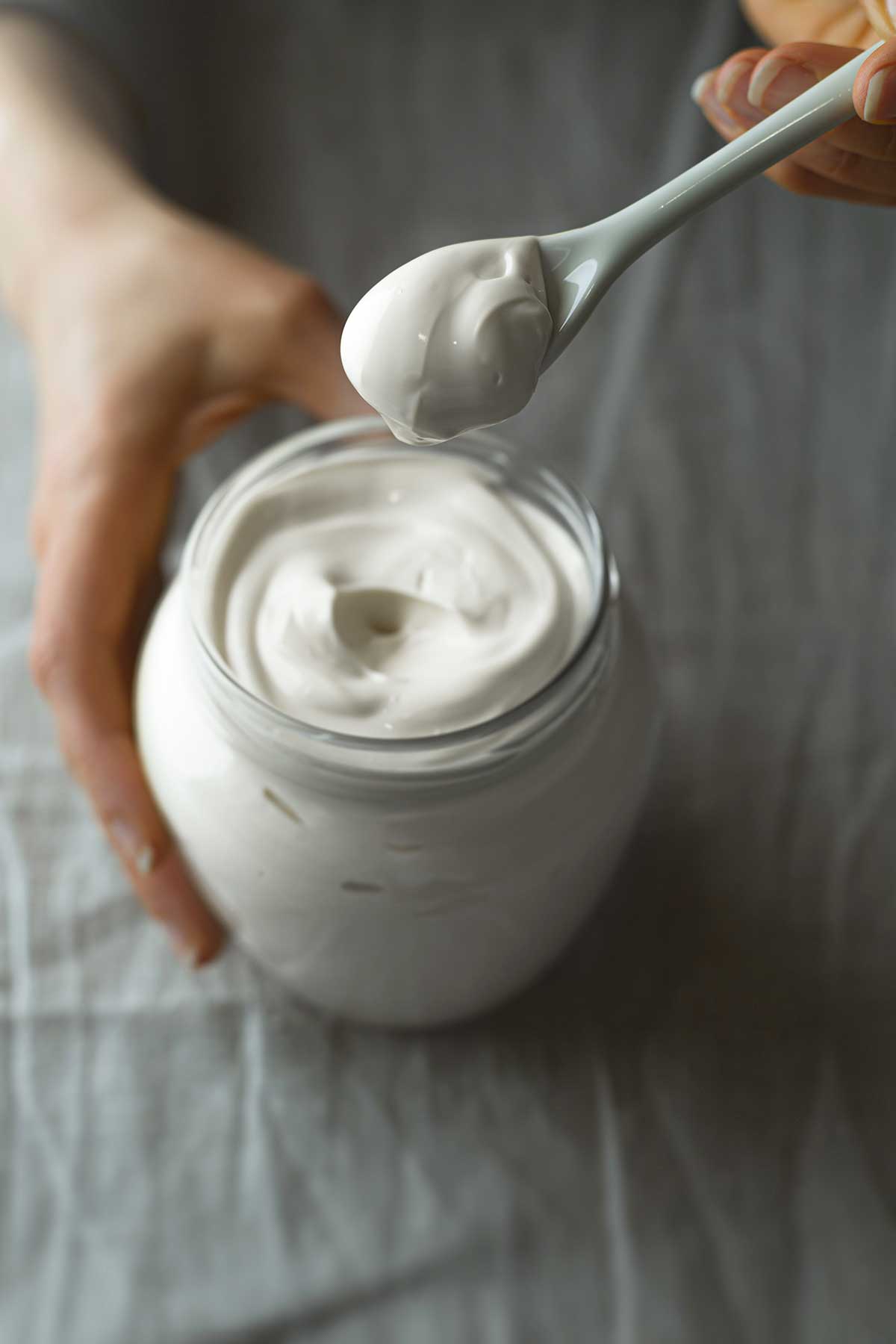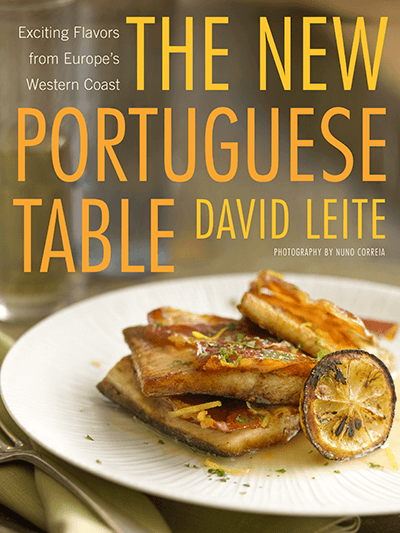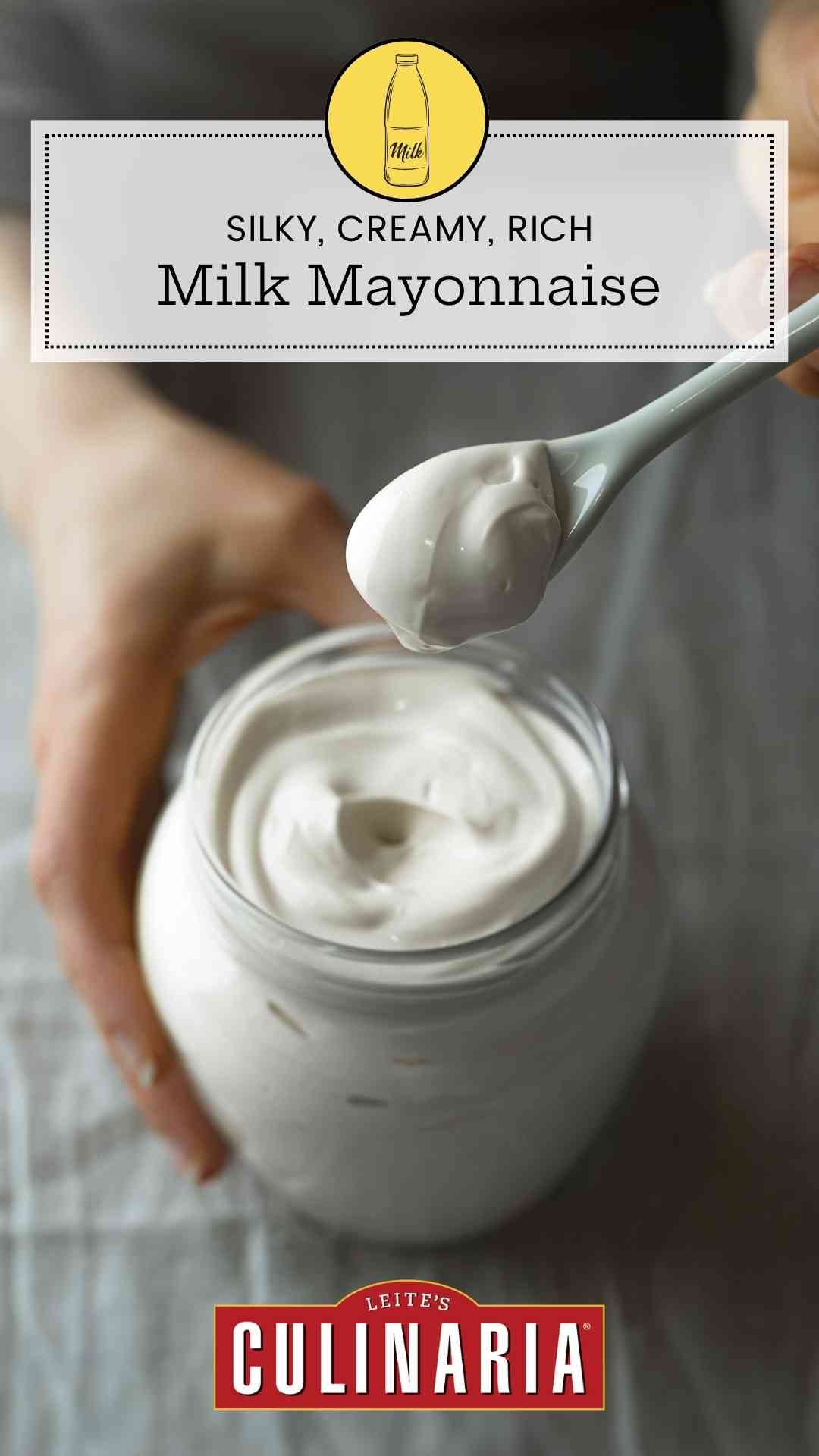
This is one of those recipes that require quotation marks, not out of affectation, but because it’s not a true mayonnaise. It contains no egg yolks or mustard. It’s nothing more than an emulsion of milk and oil. More Brazilian than Portuguese, it’s just now beginning to be used on the Continent. The taste is lighter and cleaner than that of egg-based mayonnaise, allowing other flavors to come through.
☞ Read the Article: The Secret Behind Milk Mayonnaise
Since I was given the recipe, I haven’t stopped finding ways to cook with it. The master recipe is only a canvas for additions. Besides the uses in this book, I’ve smeared the variations on grilled meats and fish, used them as dips and in dressings, spread them on sandwiches, and stirred them into potato salads, much as I do with actual mayonnaise.
Why Isn’t my Mayonnaise Emulsifying?
Like all emulsions, this recipe can be a bit finicky. But adding the oil in a thin stream and stopping when the right consistency is reached is the key. For almost foolproof results, a handheld blender is best, but a small canister blender with a narrow base will do (tall and narrow is best here). Don’t do as some of us did and assume that a stand mixer or food processor will work—it just won’t. If you’re working with a less-than-powerful immersion blender, the consistency of the mayonnaise may turn out thinner than you’d expect. You can help it along by slowly adding 2 more tablespoons of oil to the milk mayonnaise as you continue to blend and it will thicken nicely.

Milk Mayonnaise
Ingredients
- ⅓ cup very cold milk
- ¾ teaspoon fresh lemon juice
- 1 small garlic clove, peeled
- ⅛ teaspoon white pepper
- About ¾ cup vegetable oil, or 1/2 cup (118 ml) vegetable oil plus 1/4 cup (60 ml) olive oil
- Kosher salt
Instructions
- Combine the milk, lemon juice, garlic, and pepper in a 2-cup glass measuring cup. Using a handheld blender (or a blender), buzz on high for 30 seconds until frothy.
- With the motor running on high, slowly pour in the oil a few drops at a time, and gradually increase this to a fine thread, moving the blender up and down, until the mixture thickens lusciously and resembles a soft mayonnaise. You may need more or less oil.
- Season with salt to taste. The mayonnaise will last up to 1 week in the fridge.
Notes
Milk mayonnaise variations
Clockwise from top right: cilantro-ginger, curry, anchovy, sun-dried tomato.
Cilantro and Ginger Milk Mayonnaise | Maionese de Leite com Coentros e Gengibre
Add 1 loosely packed cup of well-dried fresh cilantro leaves and tendril-soft stems and a 1 1/2-inch peeled and grated thumb of ginger to the cup along with the milk, 1 3/4 teaspoons of lemon juice, and the pepper. Omit the garlic. Whir in the oil as directed above. Stir in 1 scallion cut into thin slices on the diagonal.Anchovy Milk Mayonnaise | Maionese de Leite com Anchovas
Add 6 anchovy fillets (generous 1 tablespoon) packed in oil to the cup along with the milk, lemon juice, garlic, and pepper. Whir in the oil as directed above. Omit the salt.Curry Milk Mayonnaise | Maionese de Leite com Caril
Add 2 teaspoons of your favorite curry powder to the cup along with the milk, lemon juice, garlic, and pepper. Whir in the oil as directed above. Before using, let this sit for an hour or so in the fridge to bloom.Tomato Milk Mayonnaise | Maionese de Leite com Tomate
Add 1 1/2 tablespoons of double-concentrate tomato paste to the cup along with the milk, garlic, and pepper. Omit the lemon juice. Whir in the oil as directed above. Stir in 1 tablespoon minced oil-packed sun-dried tomatoes.
Nutrition
Nutrition information is automatically calculated, so should only be used as an approximation.











Perfect!
This is the recipe what i was looking for.
Despite the unusual measurement units, I managed to do it right the first time.
Hugs from Brazil.
Reginaldo, maravilhoso saber que funcionou para você. Abraços.
Hey Everyone! I made this recipe, I would like to point out that I used a blender. First attempt I followed exactly as David’s recipe but it split. My 2nd attempt however turnout well when I excluded the acid. Once the acid was introduced it turned lumpy. HELP ME!
Hazim, as the recipe says, a handheld blender/wand blender is best for this dish, unless you’re making a large amount. Second best is a small blender, not a regular-size blender. That may be why you had a problem the first time. It sounds like you forgot to add the acid at the right time during your second attempt. The lemon juice, milk, garlic, and pepper should all be whizzed together first then the oil is added. That way the emulsion can be created.
Hi David
I have now a “multiple task” hand mixer–remember the orange cake whipped up by hand 🙂 ?–that came with an immersion blender. So I did try the milk mayonnaise and it came quite creamy, but not very thick. It got better after adding salt, vinegar and lemon juice (also added a pinch of nutmeg, curry [for yellow color], white pepper and oregano. I left in the fridge for the next tomato salad (which was today) and it looked like Hellman’s in terms of consistency.
This is quite popular in Spain and Latin American Spanish-speaking countries. It is known as ‘LACTONESA’ or Alioli de Leche in Andaluzia (see youtube)… and a tip on the videos I’ve seen is that adding a bit more oil gets a thicker effect.
Also, for whole egg mayo the immersion blender is also… the best!
Thanks for the recipe… we live 30 km away from the next supermarket and no more anxious feelings in the kitchen because… there’s no Mayooooooo!
Jorge, glad you liked the recipe. Yes, it’s quite popular in Latin America and parts of Spain. The Portuguese chef who taught it to me was influenced by Brazil.
Did you not add the lemon juice and white pepper as called for in the recipe? And, yes, as I said in the post, you can add more oil if need be to get the right consistency. It’s quite a flexible condiment!